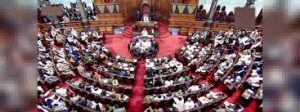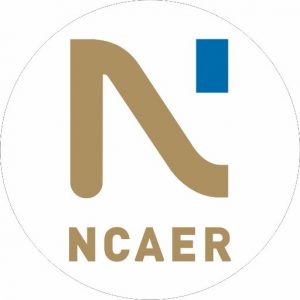Today Current Affairs: 8th February 2021 for UPSC IAS exams, State PSC exams, SSC CGL, State SSC, RRB, Railways, Banking Exam & IBPS, etc
Table of Contents
Startup India Seed Fund Scheme (SISFS):

Startup India Seed Fund Scheme (SISFS) has been approved for the period of the next four years starting from 2021-22.
- It will be implemented with effect from 1st April 2021.
- The Scheme aims to provide financial assistance to startups for proof of concept, prototype development, product trials, market-entry, and commercialization.
- 945 Crore corpus will be divided over the next 4 years for providing seed funding to eligible startups through eligible incubators across India.
- The scheme is expected to support about 3600 startups.
A Glacial Break-In Uttarakhand :

A glacial break in the Tapovan-Reni area of Chamoli District of Uttarakhand led to a massive Flash Flood in Dhauli Ganga and Alaknanda Rivers, damaging houses and the nearby Rishiganga power project.
- It occurred in the river Rishi Ganga due to the falling of a portion of the Nanda Devi glacier in the river which exponentially increased the volume of water.
- Rishiganga meets Dhauli Ganga near Raini. So Dhauli Ganga also got flooded.
Flash Floods:
- These are sudden surges in water levels generally during or following an intense spell of rain.
- These are highly localized events of short duration with a very high peak and usually have less than six hours between the occurrence of the rainfall and peak flood.
- The flood situation worsens in the presence of choked drainage lines or encroachments obstructing the natural flow of water.
Causes:
- It may be caused by heavy rain associated with a severe thunderstorm, hurricane, tropical storm, or meltwater from ice or snow flowing over ice sheets or snowfields.
- Flash Floods can also occur due to Dam or Levee Breaks, and/or Mudslides (Debris Flow).
- In areas on or near volcanoes, flash floods have also occurred after eruptions, when glaciers have been melted by the intense heat.
- The intensity of the rainfall, the location and distribution of the rainfall, the land use and topography, vegetation types and growth/density, soil type, and soil water- content all determine just how quickly the Flash Flooding may occur, and influence where it may occur.
Glaciers
- Glaciers are a bulk of ice moving under its weight.
- It forms in areas where the amassing of snow goes beyond its ablation over many years.
- They are generally seen in the snow-fields.
- This largest freshwater basin covers around 10% of the land surface of the Earth.
- According to the topography and the location of the glacier, it can be categorized as Mountain Glacier (Alpine Glaciers) or Continental Glacier (Ice Sheets).
- The Continental Glacier moves outward in all directions whereas the Mountain Glacier moves from a higher to a lower altitude.
Nai Roshni:

Nai Roshni”, a scheme for Leadership Development of Minority Women by the Ministry of Minority affairs is being implemented across India.
- Its aim is to empower and instill confidence in women by providing knowledge, tools, and techniques for interacting with Government systems, banks, and other institutions at all levels.
- This includes empowerment of the trainee women so that they become independent and confident members of the society.
- The scheme provides for six days training programme followed by handholding for a period of one year.
- The training covers issues relating to women viz. The leadership of Women through participation in decision making, Educational Programmes for women, Health and Hygiene, Legal rights of women, Financial Literacy, Digital Literacy, Swachh Bharat, Life Skills, and Advocacy for Social and Behavioural change.
- The Scheme is being implemented through Non-Governmental Organisations empanelled under the NaiRoshni Scheme as per scheme guidelines in force.
Odisha’s Border Disputes:

A border dispute between Odisha and Andhra Pradesh once again resurfaced when Andhra Pradesh announced panchayat polls in three villages of Kotia panchayat in the Koraput district of Odisha.
Border Disputes of Odisha:
- Odisha was carved out of the Bengal-Bihar-Odisha province on 1st April 1936, but the inter-state border disputes continue even today.
- Odisha continues to have unresolved border disputes with four neighboring States in its 8 out of 30 districts.
- 14 of the 30 districts share borders with Andhra Pradesh, West Bengal, Chhattisgarh, and Jharkhand.
- However, the disputes over Kotia villages in Koraput district bordering Andhra Pradesh is the only major border conflict.
About the Kotia Dispute:
- Odisha and Andhra Pradesh are locked in a territorial dispute over Kotia gram panchayat since 1960. Disputes pertain over 21 villages in Kotia gram panchayat.
- Residents of Kotia panchayat receive benefits from both Pottangi block in Koraput and Salur in Vizianagaram district of Andhra Pradesh.
- They depend on both the blocks for their day to day activities.
Water Dispute with Andhra Pradesh:
- In 2006, Odisha sent a complaint to the Central Government under Section 3 of the Inter-State River Water Disputes (ISRWD) Act, 1956 regarding its water disputes with Andhra Pradesh pertaining to Inter-State River Vamsadhara.
Jerenga Pothar And Dhekiajuli Town:

The Prime Minister visited two significant historical places in Assam.
- The first was Sivasagar’s Jerenga Pothar, where 17th-century Ahom Princess Joymoti sacrificed her life.
- The second was Dhekiajuli town, associated with the Quit India Movement of 1942.
Jerenga Pothar:
- Jerenga Pothar, an open field in Sivasagar town, is popularly connected to the valor of 17th century Ahom princess Joymoti.
- Formerly known as Rangpur, Sivasagar was the seat of the powerful Ahom dynasty, which ruled Assam for six centuries (1228-1826).
- Chaolumg Sukapha founded the Ahom kingdom.
- From 1671 to 1681, the Ahom kingdom was undergoing a period of turmoil, it was at this time that Prince Godapani (Joymoti’s husband) escaped to the Naga Hills before enemies could capture him.
- But his enemies captured his wife Joymoti, hoping she would tell them about his whereabouts, however, despite being tortured for days, tied to a thorny plant, in an open field, Joymoti refused to divulge any information.
- She died, sacrificing her life for her husband, who ultimately became the king, ushering in an era of stability and peace in Assam.
- The place Joymoti was tortured to death was Jerenga Pothar.
Dhekiajuli Town:
- Dhekiajuli was home to possibly the youngest martyr of the Indian freedom struggle.
- On 20th September 1942, as part of the Quit India Movement, processions of freedom fighters marched to various police stations across several towns in Assam.
- These squads, which were known as ‘Mrityu Bahini’, or death squads, had wide participation – including women and children – and set out to unfurl the tricolor atop police stations, seen as symbols of colonial power.
- The British administration came down heavily on them. In Dhekiajuli, at least 15 people were shot dead, three of them women, including the 12-year-old Tileswari Barua.
- Tileswari is considered one of the youngest martyrs of India’s freedom struggle.
- 20th September has for long been observed as Martyrs’ Day in Dhekiajuli town.
Implementation Of National Family Planning Program:

The Government has been implementing the National Family Planning Program which provides voluntary and informed choices to the beneficiaries through a target-free approach with the objective of checking population increase in the country.
- A National Population Policy has been formulated in the year 2000 with the long-term objective of attaining population stabilization by 2045.
- New Contraceptive Choices: The current contraceptive basket has been expanded with the inclusion of two new contraceptives- Injectable contraceptive (Antara program) and Centchroman (Chhaya).
- Post-partum Intrauterine contraceptive device(PPIUCD) incentive scheme under which PPIUCD services are provided post-delivery.
- Compensation scheme for sterilization acceptors which provides compensation for loss of wages to the beneficiary and also to the service provider and team for conducting sterilization.
- National Family Planning Indemnity Scheme (NFPIS) under which clients are compensated in the eventualities of death, complication, and failure following sterilization operations.
- Family Planning Logistics Management Information System (FP-LMIS): dedicated software has been launched to ensure smooth forecasting, procurement, and distribution of family planning commodities across all the levels of health facilities.
- Mission Parivar Vikas has been introduced for substantially increasing access to contraceptives and family planning services in seven high focus states having TFR of more than 3 namely Uttar Pradesh, Bihar, Madhya Pradesh, Rajasthan, Jharkhand, Chhattisgarh, and Assam.
- Scheme for Home Delivery of contraceptives by ASHAs at the doorstep of beneficiaries has been taken up.
- Scheme for provision of Pregnancy Testing Kits in the drug kits of ASHA for use in communities.
Central Research Institute For Soyabean:

The Union Minister of Agriculture informed Rajya Sabha about the setting up a Central Research Institute in Kalahandi for Soyabean.
- The Kalahandi district of Odisha produces Soybean on a very limited scale.
- The ICAR has established a national-level research Institute on Soybean in 1987 namely, ICAR-Indian Institute of Soybean Research, Indore (Madhya Pradesh) to conduct basic and strategic research on the crop.
- Besides this, ICAR is also implementing an All India Coordinated Research Project (AICRP) on Soybean since 1967 in association with the State Agricultural Universities (SAUs) to develop location-specific high yielding varieties and production technologies required to increase Soybean production in the country.
- The ICAR-AICRP on Soybean has one voluntary center at Regional Research & Technology Transfer Station, Bhawanipatna (Kalahandi) under the Odisha University of Agriculture & Technology, Bhubaneswar.
- This station is undertaking need-based and location-specific research on Soybean for the hot & moist sub-humid climate of Odisha comprising of Kalahandi, Bolangir, and Koraput.
Pradhan Mantri Fasal Bima Yojana (PMFBY) :

To boost the safety of farmers’ crops and ensure the maximum benefit of crop insurance reaches farmers, the Government of India has allocated Rs 16000 crores for Pradhan Mantri Fasal Bima Yojana (PMFBY) for the fiscal year 2021-22.
- This is a budgetary increase of around Rs 305 crore as against the previous fiscal year 2020-21.
- The scheme extends coverage for the entire cropping cycle from pre-sowing to post-harvest including coverage for losses arising out of prevented sowing and mid-season adversities.
- 5 years ago, on 13th January 2016, the Government of India approved this flagship crop insurance scheme.
- Today, PMFBY is globally the largest crop insurance scheme in terms of farmer participation and 3rd largest in terms of premium.
- Over 5.5 crore farmer applications are received on a year-on-year basis.
- The Ministry of Agriculture and Farmers Welfare implements this scheme which was made voluntary for farmers post its revamp in 2020.
- As of now. out of total farmers enrolled under PMFBY, 84% are small and marginal farmers. Thus, financial assistance is provided to the most vulnerable farmers.
Jammu And Kashmir Reorganisation (Amendment) Bill, 2021:

The Rajya Sabha has cleared The Jammu and Kashmir Reorganisation (Amendment) Bill, 2021 by voice vote on February 8, 2021.
- The bill seeks to replace the ordinance to merge the Jammu and Kashmir (J&K) cadre and the Arunachal Pradesh, Goa, Mizoram Union Territory (AGMUT) cadre of civil services officer.
- This bill was recently introduced in the Upper House of the parliament.
- The bill will also increase the strength of officers in the Union Territories of Jammu and Kashmir and Leh.
- The Jammu and Kashmir Reorganisation (Amendment) Bill, 2021 has been passed in line of the enactment of the Jammu and Kashmir Reorganisation Act, 2019 in the Jammu & Kashmir after the revocation of Article 370 in the region.
- The act of 2019 had reconstituted the State of Jammu and Kashmir into two union territories namely, the Jammu & Kashmir and Ladakh, on 31 October 2019.
- It has reconstituted that area of the J&K that has always been a part of the larger region of Kashmir which is the dispute between India, Pakistan, and China
Economic Impact Of Judicial Decisions’:

The NITI Aayog has ordered the Jaipur-based research organisation Consumer Unity and Trust Society (CUTS) International to study the “economic impact” of judgments delivered by Supreme Court (SC), high courts (HCs), and quasi-judicial bodies like the National Green Tribunal (NGT). It has also asked to study the “judicial activism” of such courts and tribunals.
- Judicial decisions have far-reaching economic impacts.
- These impacts are usually not taken into account at the time of decision making.
- This study will be completely funded by the NITI Aayog.
- The study will be conducted with the aim of “sensitizing the judiciary on the economic impact of their decisions”.
- The findings from the study will be used as the “training input for judges of the SC, HCs, commercial courts and NGT”.
- The total cost of the project initially was Rs 24.8 lakh. However, it is likely to go higher.
- CUTS International will study the economic impact of five different decisions by the SC and the NGT.
The five judgment include:
- The economic impact of the ban imposed by the SC in March 2019 on the construction of a greenfield airport at Mopa, Goa.
- SC’s February 2018 ban on iron ore mining in Goa.
- NGT ban on sand mining in the Yamuna river in Gautam Buddha Nagar in the year 2013.
- SC ban on construction of buildings in Delhi and National Capital Region
- SC’s decision to reject the opening of Vedanta’s Sterlite copper plant.
Business Confidence Index:

The Business Confidence Index (BCI) was recently published by the National Council of Applied Economic Research (NCAER).
- The index has risen 29.6 percent between the second and third quarters of the financial year 2020-2021.
- It has risen in the backdrop of the COVID-19 vaccination drive in several countries including India.
- The respondents also expect that the ‘overall economic conditions will improve in the next six months.
- They expect that it will be increased by 4.8 percentage points in the quarter three of the financial year 2020-2021.
- That is, from 29.8 percent in the year quarter two of 2020-2021 34.6 percent in Q3.
- They also expect that the ‘financial position of firms will improve in the next six months’. There is an expectation that it will be increased by 3.1 percentage points in the quarter 3 of 2020-2021.
- The BES findings are based on the responses of 500 firms. The reports are based on the 115th round of BES which was carried out in December 2020. The findings further highlight that,
- Though covid-19 vaccine were rolled out in Europe and North America. But it was accompanied by the discovery of new mutations of the coronavirus.
- In Indian, approval of Covishield and Covaxin vaccines for restricted use was given on January 3, 2021.
- Indian economy is following the recovery path and will show a positive growth in the quarter 3.
- In India, the business sentiments have also shown the V-shaped pattern of recovery.
- The report further states that, the fiscal stimulus under Aatmanirbhar 2.0 and 3.0 schemes will accelerate the public investment. However, the private investment will remain sluggish because of low-capacity utilisation.
National Council of Applied Economic Research (NCAER)
- NCAER is a New Delhi based non-profit economic think tank. The NCAER do research in the field of economics. It was established in the year 1956.




